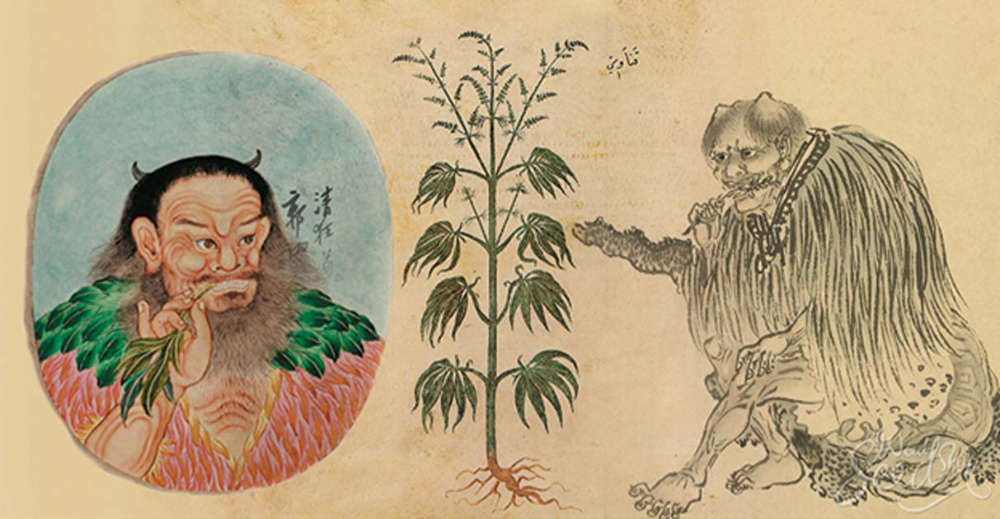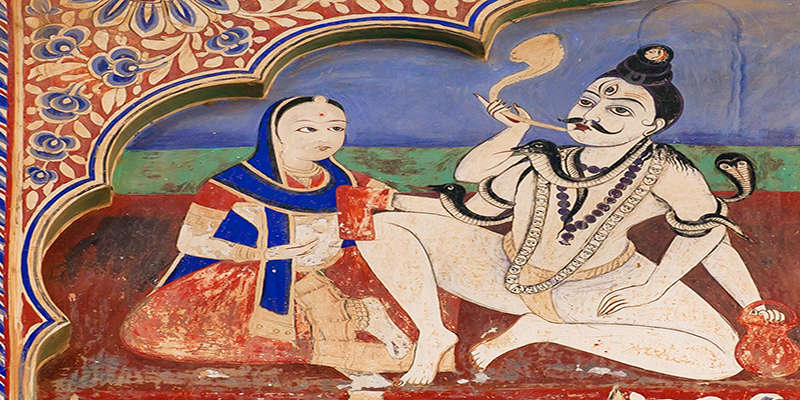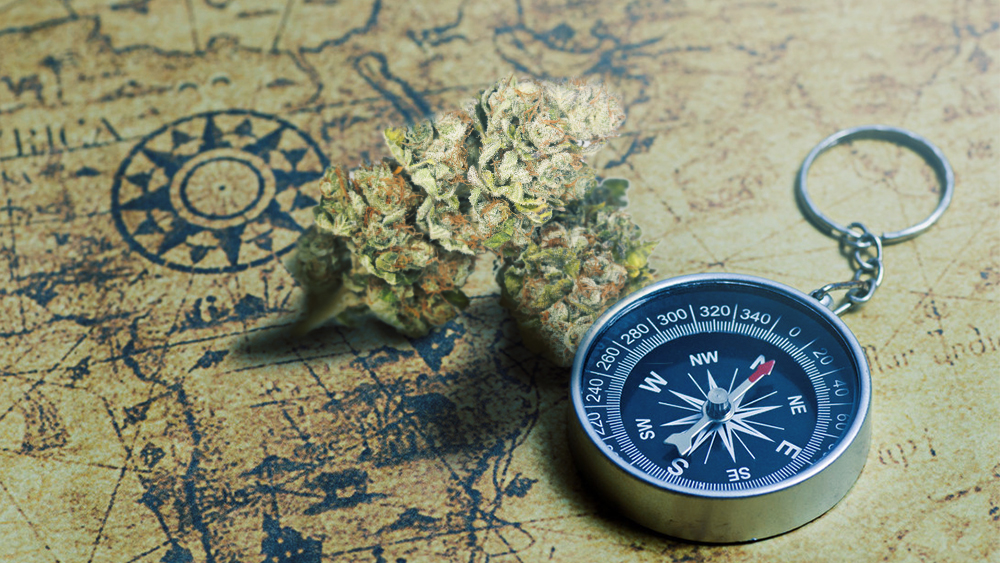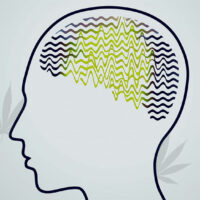Most ancient cultures have realized and documented cannabis’ therapeutic applications, allowing us to trace a 6,000-year-old history of medical marijuana.
For instance, did you know that Pen Ts’ao Ching, the world’s oldest pharmacopeia (2,700 B.C.), contains records of cannabis being used for the treatment of over 100 different ailments?
Whether or not cannabis should be used in healthcare has been debated over the past few decades. However, this plant’s well-documented history reminds us that physicians have used it successfully and extensively over the course of six millennia.
Western societies have kept this medical tradition alive until the 20th century when we witnessed a tidal wave of regulations concerning the use of marijuana, which culminated in 1937 with America’s Marijuana Tax Act.
From that point on, basically, any type of cannabis use became a federal offense. Canada soon followed with its prohibition which lasted for 85 years.
If we put things into perspective, the criminalization of marijuana that took place in the 20th century hasn’t been an accurate reflection of the way people have been using the plant throughout the past 6,000 years.
In order to improve our understanding of cannabis and its medical applications, let’s delve deep into the history of medical marijuana use.
Ancient Times
China

Thousands of years ago, hemp was one of the most common agricultural crops. People used to harvest it for its protein-rich oil, seeds, and fibers, which were used to make clothes, paper, and rope. Of course, hemp is just a variety of the cannabis plant which has no psychoactive effects.
Some ancient cultures, including China, grew hemp mainly for food. But it would take some time before people realized that other varieties of cannabis were fit to be used for medicinal purposes as well.
According to historical evidence, China was the first culture to use cannabis for pain alleviation and treatment of various conditions. However, even then (approximately 4,000 B.C.), physicians forewarned their patients not to use the plant excessively as they could end up “seeing demons.”
Legend has it that one of the great leaders of the ancient world, Emperor Shen Neng (ruled during 2,700 B.C.), used to prescribe marijuana tea to help treat conditions such as rheumatic pain, gout, and malaria.
Not only that, but the world’s oldest pharmacopeia, Pen Ts’ao Ching, is actually attributed to Emperor Shen Neng, despite being compiled during the first century.
India

After cannabis use grew immensely in China, it started making its way westward toward India around 2,000 B.C. Ever since then, India’s culture remained inextricably intertwined with cannabis use. In one of the Vedic scriptures, cannabis has been listed as one of the five sacred plants of Hinduism.
All of this indicates that cannabis became an integral part of religious practices in India. Namely, it was smoked during the daily devotional services, which allowed people to experience marijuana’s health benefits while worshipping deities.
Due to cannabis’ analgesic, anticonvulsant, anesthetic, antibiotic, and anti-inflammatory properties, people started using it for the treatment of epilepsy, rabies, rheumatism, anxiety, and even bronchitis and asthma.
In India, to this day, cannabis is the essential ingredient of one of the most popular drinks called bhang (a combination of milk, ghee, cannabis paste, and some local spices). Indian writers from the past reported that this drink had the potential to make one happy, improve mental powers, as well as eliminate phlegm and wind.
It was believed that cannabis cured sunstroke and dysentery, and also sharpened the appetite, improved digestion, and freshened the intellect.
Other Cultures
Though there’s very little information about the medical use of cannabis in Egypt, the Ebers Papyrus contains notes of cannabis being used for treating inflammation. Moreover, it’s said that the Egyptians also used cannabis for glaucomas and enemas, and that cannabis was found on the excavated mummy of Pharaoh Ramses II.
Right around the year 450 B.C., marijuana emerged on the shores of the Mediterranean sea. Herodotus was among one of the first Greeks to write about marijuana’s psychotropic effects.
According to him, cannabis seeds were burned during Scythian funeral ceremonies in order to invoke states of euphoria. On top of that, the ancient Greeks, themselves, used to remedy inflammation and edema with cannabis.
Famous Roman army doctor and physician, Dioscorides, included his insight on cannabis into what would become the most important medical textbook for the following 1,500 years, De Materia Medica (On Medical Matters). In it, he documented how cannabis could be used to treat toothaches and earaches.
In addition, it’s recorded that Roman women used cannabis to reduce labor pains.
Before we move on to the use of cannabis in medieval times, there’s one more discovery worth mentioning, and it comes, once again, from China. Namely, around the year 200 A.D., a famous Chinese surgeon called Hua T’o was the first-ever physician who used cannabis as an anesthetic during surgery.
He would basically ground the plant until it turned to powder and mixed it with red wine. What’s interesting is that the Chinese word for anesthesia is mázui, which quite literally means “cannabis intoxication.”
Medieval Times
It’s well known that Avicenna (980 – 1037 A.D.), a successful Persian physician, was one of the most influential medical writers of medieval times. He went on to summarize all medical knowledge in his book Avicenna’s Canon of Medicine. Records show that his book was studied heavily from the 13th to the 19th century, making a lasting impact on western medicine.
According to Avicenna, cannabis is one of the most effective drugs for curing edema, gout, headaches, and severe wounds.
Throughout medieval times, cannabis was an incredibly popular drug in the Middle East. This was mostly because of Islam’s prohibition of alcohol consumption. Most Muslims, therefore, turned to marijuana, or hashish, as they call it.
Interestingly enough, in Arabic medicine, cannabis was considered as the go-to medicine for epilepsy. Both medical scholars al-Mayusi (900 – 1000 A.D.) and al-Badri (1464 A.D.) wrote about cannabis leaves being used for treating this neurological disorder.
The 1300s saw the rise of cannabis on the shores of Eastern Africa after the Arab traders brought it in from India. According to records, in Africa, cannabis was used for treating asthma, fever, malaria, and dysentery.
Across Europe, it’s likely that cannabis didn’t play a major role in religious and spiritual ceremonies like it did in India and the Middle East. However, European folk medicine did rely on cannabis as a means of treating various conditions such as cough, tumors, and jaundice.
That being said, medieval physicians did warn their patients not to use the plant excessively, as it could cause sterility and other unwanted conditions.
Modern History of Medical Marijuana
Spanish conquistadors of the 16th century brought cannabis to both Americas. However, during the colonization of North America only hemp was brought in for the purposes of making clothes and paper. It would take somewhere between 200-300 years before cannabis’ therapeutic uses were discovered in America.
One of the oldest mental health books called The Anatomy of Melancholy, written by English Clergyman Robert Burton in 1612, mentions cannabis as a potential cure for depression.
The real breakthrough, when it comes to marijuana’s medical applications in the west, happened during the late 18th century. At that time, some medical journals in America began writing about treating skin inflammation, incontinence, and other health issues by using hemp seeds and roots.
However, the one person responsible for the promotion and implementation of medical marijuana was William O’Shaughnessy. It was this Irish doctor who advocated the use of cannabis for treating rheumatism and nausea both in England and America.
O’Shaughnessy came into contact with cannabis while working as a doctor for the British East India Company in India. He performed tests on animals in order to establish how toxic the drug was.
Soon afterward, when he discovered that the drug was completely safe, he began prescribing it to his patients, which brought him a fair deal of success. One of his biggest achievements came when he managed to successfully treat muscle spasms caused by rabies and tetanus.
Reportedly, Queen Victoria used cannabis in the form of a tincture (cannabis extract in alcohol) to treat her dysmenorrhoea (menstrual cramps).
In the 19th century, marijuana became mainstream medicine in the west. Pharmacies sold cannabis-based cures such as “One-day cough cure” and “Piso’s cure.” More than 100 papers were published on the therapeutic uses of cannabis.
Sajous’s Analytic Cyclopedia of Practical Medicine published in 1924, summarized the main medical applications of cannabis. According to them, cannabis was an effective cure for inflammation, migraines, and coughing, as well as diseases such as rabies, tetanus, and gonorrhea.
The Fall of Medical Marijuana
After reaching its peak in the late 19th century, the use of cannabis quickly plummeted due to a variety of factors. First, the invention of vaccines for conditions such as tetanus, which were previously treated with cannabis, made the drug redundant. Then, the development of synthetic analgesics such as aspirin reduced the need for cannabis even further.
However, it’s the discovery of the hypodermic needle that really pushed the use of medical marijuana to the brink of extinction.
This decline in the therapeutic use of cannabis was followed by the enactment of the Marijuana Tax Act in 1937 which completely terminated the use of cannabis for medicinal purposes. Soon afterward, in 1941, cannabis was completely removed from the American pharmacopeia.
After that, it took thirty years for cannabis to make its way back into the spotlight, thanks to the massive increase in recreational use of marijuana in the early seventies.
Fifty years later, the legalization of medical marijuana throughout the American continent (and the rest of the world) is proof enough that the health benefits of cannabis have finally been recognized.
Though the plant’s medical potential still hasn’t been sufficiently researched, it has helped many patients in situations when traditional medicine fails.









Anz Cando July 31, 2020 at 2:30 am
You stated: "smoked during the daily devotional services .. allowed people to experience marijuana’s health benefits...." Please quote evidence that cannabis/ marijuana has health benefits when smoked since I cannot find any. On the other hand, the health benefits of the oral use of cannabis/marijuana HAS been well documented.
Garvin A Douglas November 10, 2020 at 6:20 pm
I think she meant the Indians' -of that time, perceived health benefits.